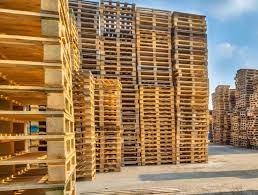Pallets are an essential component of supply chains, facilitating the movement and storage of goods. However, ensuring the safety of palletized loads is of utmost importance to prevent accidents, damage to products, and potential injuries. By following proper pallet safety guidelines, businesses can maintain a secure and reliable load, reducing the risk of accidents and promoting efficient logistics operations. Melbourne Pallets understands the importance of pallet reliability for efficient supply chain operations, and their products are built to withstand heavy loads and rigorous handling. In this article, we will explore important safety guidelines to consider when working with pallets to ensure the secure handling and transportation of goods.
Selecting and Inspecting Pallets
Pallet Quality
- Material Condition: Choose pallets made from high-quality materials, such as sturdy wood or durable plastic. Avoid using pallets that are damaged, cracked, or weakened, as they may compromise load stability.
- Load Capacity: Ensure that the selected pallets have an appropriate load capacity for the intended goods. Consider factors such as weight, dimensions, and stacking requirements to ensure the pallets can safely support the load.

Inspection Process
- Visual Examination: Inspect pallets for any visible signs of damage, such as broken boards, protruding nails, or loose components. Address any issues promptly by repairing or replacing damaged pallets.
- Structural Integrity: Assess the structural integrity of the pallets, checking for sagging or warped boards, loose fasteners, or signs of rot. These issues can compromise load stability and should be addressed before use.
Proper Loading and Stacking
Load Distribution
- Weight Distribution: Distribute the weight of the load evenly across the pallet to maintain balance and stability. Concentrated weight on one side of the pallet can lead to tipping or load failure during handling or transportation.
- Center of Gravity: Position the heaviest items closer to the center of the pallet to maintain a low and stable center of gravity. This reduces the risk of toppling and enhances load stability.
Secure Stacking
- Stacking Alignment: Ensure that the load is stacked evenly and aligned properly on the pallet. Overhang or uneven stacking can cause instability and increase the risk of collapse or shifting during handling.
- Interlocking and Nesting: When stacking multiple pallets, interlock them securely to prevent movement or sliding. Nesting the pallets together provides additional stability, reducing the risk of toppling.
Safe Handling and Transportation
Manual Handling
- Proper Lifting Techniques: Train employees in proper lifting techniques, such as bending at the knees, using leg muscles, and maintaining a straight back. This reduces the risk of strain or injury when manually handling pallets.
- Teamwork and Communication: Encourage teamwork and effective communication among employees when handling pallets. Coordination and clear communication help prevent accidents and ensure the safe movement of palletized loads.
Forklift Operations
- Certified Operators: Ensure that forklift operators are properly trained, certified, and familiar with safe operating procedures. Proper forklift operation reduces the risk of accidents and damage to pallets and goods.
- Secure Fork Insertion: Ensure that the forks are inserted fully and evenly into the pallet, providing a secure grip. Partial or uneven insertion can cause pallet instability during lifting and transportation.
Load Restraints and Containment
- Strapping and Stretch Wrapping: Use appropriate strapping or stretch wrap to secure the load on the pallet. This helps prevent shifting, toppling, or spillage during transportation.
- Edge Protection: Install edge protectors or corner guards to prevent damage to the palletized load caused by straps or stretch wrap. Edge protection enhances load stability and maintains the integrity of the goods.
Ongoing Maintenance and Monitoring
Regular Inspection
- Scheduled Inspections: Implement a regular inspection schedule to identify and address any issues with pallets. Periodically check for damage, wear and tear, or any changes in load requirements to maintain load safety.
- Repair or Replace: Promptly repair or replace damaged or weakened pallets to ensure load security. Regular maintenance and timely replacement prevent compromised load stability.
Monitoring Load Stability
- Periodic Checks: Regularly monitor the stability of palletized loads during storage, handling, and transportation. Address any signs of shifting, tilting, or compromised stability immediately to prevent accidents or damage.
- Load Redistribution: If load stability issues are identified, redistribute the load or make necessary adjustments to maintain stability. This may involve restacking or repositioning the load on the pallet.
Conclusion
Following proper pallet safety guidelines is essential for ensuring a secure and reliable load during transportation and storage. By selecting high-quality pallets, properly loading and stacking goods, practicing safe handling and transportation, and conducting regular inspections, businesses can minimize the risk of accidents, damage to products, and injuries. Implementing these guidelines not only enhances load safety but also promotes efficient logistics operations and protects the well-being of employees.
Make pallet safety a priority in your operations, and create a culture of awareness and adherence to ensure the secure handling and transportation of goods.

